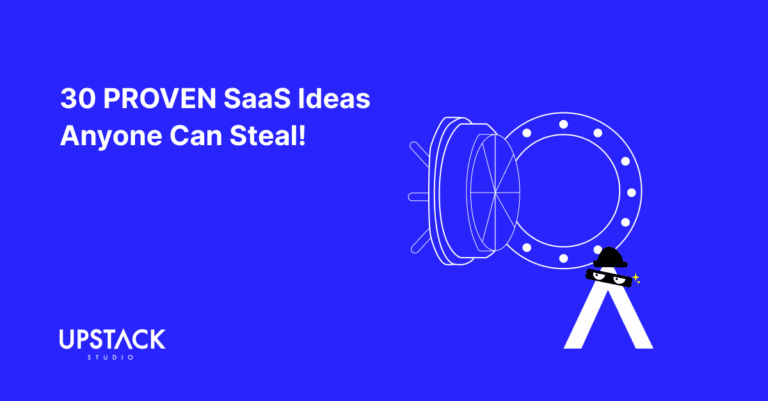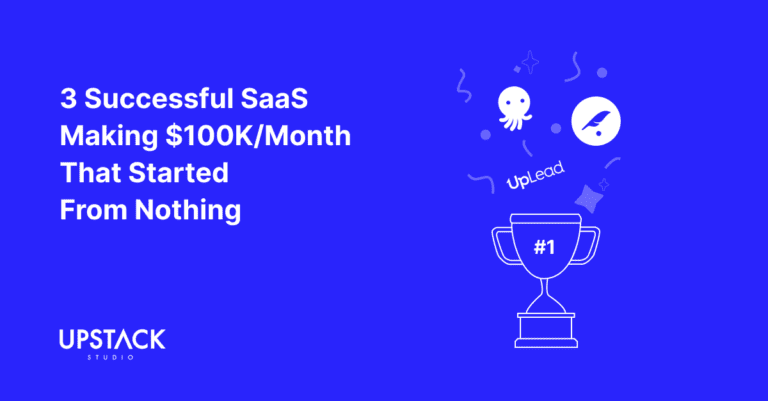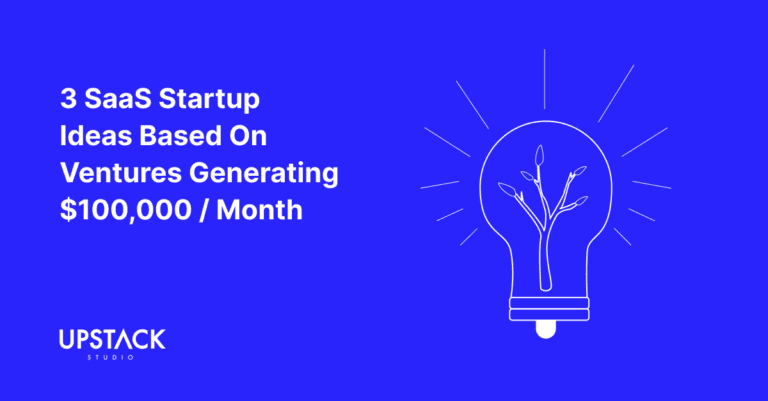Break the First Time Founder’s Curse!
Nobody loves a software product quite like a first-time founder.
What seasoned founders see as a SaaS, newbies see a newborn in need of tender loving care.

That’s also why no one messes up building software products quite as much!
So, if you’re about to build a SaaS for the first time, here are a dozen mistakes your fellow first-time founders seemingly can’t help themselves from making.
We’ll start with the least serious and finish with the worst, so be sure to read to the end.
Let’s begin.
Mistake #12: Trying to Make Something for EVERYONE
Who wouldn’t want to be the founder of the next software that literally everyone needs?
But products like that are one in a million.
And when the total addressable market is the whole world, competition is fierce.
You’ll have serious competition from big industry players and founders with backing from investors.
For the best chance of success, the average founder should find a niche where they can address a unique need or problem but still sell to a decent-sized market.
Mistake #11: Ignoring Competition
Some first time founders work in a vacuum and build a SaaS identical to 100 others.
We see it ALL the time in the no code space where new no code app builders go to market with nothing new to offer.
It’s not illegal, but to carve out a piece of the market, a SaaS needs a unique selling point.
When people ask “Why choose you?”, you can point to a genuinely unique factor, no matter how minor.
After all, out of 40 people:
- 37 won’t care about your unique selling point at all
- 2 will see it as a minor advantage
- 1 will think it’s exactly what they’re looking for
This minor difference guarantees you one out of every 40 buyers and sways another two in your favor.
Only way to do this is to know what the competition offers and add something different.
Mistake #10: Being Cheap with Hiring
As a first time founder without an endless budget, you must minimize costs.
So you go full DIY, including learning how to build MVPs with no code.
However, in time you hit a limit and it’s time to hire developers – and the jump in price between a no code platform and a developer is steep.
For some founders, it’s so painful they end up hiring purely based on price.
They lift up the carpet to see which cave-dwelling developer will work for almost nothing.
And that’s the work they deliver – almost nothing!
Mistake #9: Trying to Out-Expert Developers
This is when a first time founder has done reading on technical topics and wants to ‘play lead developer’.
This one is kind of awkward and hits home for us.
Look, it’s great that as a newcomer to SaaS, you’re proactively upskilling yourself.
But articles just can’t to qualify you enough to advise developers who have been at it for years.
Some founders think it does, though, and they insist on having final say on the tech stack, architecture, and when it’s time to refactor (and they’re almost always wrong).
Mistake #8: Not Being Involved in the Build
Founders must split their attention between several key areas of the business.
Sometimes they can be so focused on marketing and finding investors that they neglect involvement in product development.
We’re talking about founders who:
- consistently miss sprint meetings
- forget what’s next on the product roadmap, and
- don’t listen when their development team raises issues discovered during development
We could be nice and say at least they don’t micromanage the development process.
But we’d rather be honest and say they barely manage it at all!
Mistake #7: No Product Roadmap!
A product roadmap outlines your SaaS’s vision, priorities, and steps needed.
It aligns a team, manages expectations, and ensures everyone works towards the same objectives.
Some first time founders don’t bother with a product roadmap, building with zero clarity on future plans.
Instead, they take it a day at a time and end up spending many days going in circles.
If you’re a first time founder, make sure you put together a solid product roadmap.
Mistake #6: Overcomplicating the SaaS
God bless first-time founders who insist on adding too many features too quickly.
They won’t say it but we know it’s because they’re anxious to please every customer.
And we know that’s because they don’t really know who they’re selling to.
(By the way, this can all be traced to no proper product roadmap, but we digress)
During early stages of development, every additional feature delays the launch of a SaaS and gives competitors more time to be the first to market.
By the time they launch, they’ve lost their USP and first-mover advantage.
Mistake #5: No Onboarding Strategy
First-time founders often assume their SaaS is too simple to need onboarding as part of the UX.
But even the simplest SaaS can be complicated in the hands of first-time users.
And first time users trying to navigate a complex SaaS is like a newborn gazelle learning to walk.
With attention spans as they are, users won’t bother learning themselves.
That’s why as you build out your features, build documentation and onboarding processes that can guide users the way they want to be guided.
Mistake #4: Not Monitoring Key Metrics
Here are some metrics that tell a founder how engaged their users are:
- Daily active users.
- Churn rate
- Feature usage.
- Session length
- Screen response time
It’s a big deal because it tells you what’s going well with your SaaS, and what’s not.
Many first time founders don’t even know how to find these metrics.
And many more won’t know how to interpret them.
You can’t rely on users telling you before you check.
For every user that bothers complaining, many more will just drop off.
And imagine if your feedback button was the part of the SaaS with a problem!
Mistake #3: Not Critically Evaluating User Feedback
To the credit of first-time founders we’ve worked with, none ignore user feedback.
Quite the opposite, actually.
A single one star review and it’s an SOS call at midnight demanding we fix things that don’t need fixing!
Look, the users of your SaaS are the most important stakeholder, no one’s denying that.
But people will want all sorts of changes to fit them.
And a lot of those changes are useful to literally nobody else.
And even if ALL your users are asking for it, if it’s going to take your SaaS from profitable to neck deep in debt, don’t do it!
Mistake #2: Biting off More Than You Can Chew
You’ll see second time founders share their regrets with taking on big challenges too soon.
They were level 1 founders who thought they were tackling a level 1 SaaS project.
But it turned out to be level 100 and it spanked them raw with:
- Challenges of managing remote teams
- Surprisingly complicated SaaS architecture, and
- Limitations with no code app builders
The best way to avoid these mistakes is to learn from others.
There’s no complete list of beginner-friendly SaaS or blacklisted remote developers.
So if you’re going solo, ask those who were once in your shoes if you’re heading for trouble.
We do have rather excellent lists of no code web app builders and no code mobile app builders you should take a look at, though!
Mistake #1: ONLY Focusing on Product Development
Building a great SaaS product is important and very difficult.
A first-time founder can be forced to focus ALL their attention on building the SaaS.
But newsflash: the world is full of fantastic SaaS that nobody uses.
We’d argue that if you want to build a profitable SaaS business, great marketing beats great product development.
As you’re building and building and building.
Your competitors are building and promoting and selling.
By the time you’re ready to sell….there’s no one left to buy.
So much effort, essentially for nothing. 🙁
All that’s left is for Mr Krabs to play you a tune on the world’s smallest violin.

If you’re not into classical music from cartoon crabs, don’t make these mistakes and wait til your second try at building a SaaS to get things right.
And seriously, make sure you have a product roadmap!
Hey there stranger, thanks for reading all the way to the end. Consider joining our mailing list for a one-stop resource on everything from micro SaaS validation all the way to execution and promotion. Get a nifty list of questions to ask app developers when you sign up!
App Developer Interview Questions Template
Download this template now so you know exactly what to ask App Development Agencies! Let us know where should we send it through the form below.





